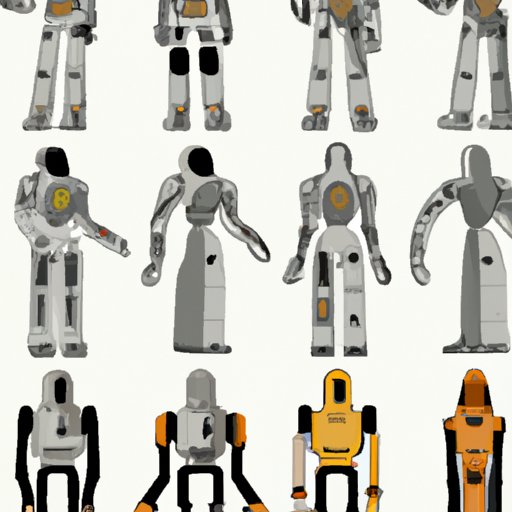Introduction
Robotics is the branch of engineering that deals with the design, construction, operation, and application of robots. It has existed for centuries, but in recent years it has become one of the most popular fields of technology. But when were robots first invented? Let’s take a look at the history of robotics and explore when the robot was first invented.
Exploring the History of Robotics: When Were Robots Invented?
The concept of robotics dates back to ancient times, when mechanical devices were used to perform simple tasks. These devices, known as “automatons”, were powered by steam or clockwork mechanisms. They were programmed to move in certain patterns and could be used to entertain audiences or act as servants. However, they lacked the intelligence of today’s robots.
In the 1940s, Alan Turing proposed the idea of artificial intelligence (AI). He proposed that computers could be programmed to carry out complex tasks, such as playing chess or solving mathematical problems. This laid the foundation for modern AI research, which eventually led to the development of robots.
A Timeline of Robot Invention: How Far Have We Come?
The 1950s saw the emergence of industrial robots. These robots were designed to automate manufacturing processes and increase the efficiency of production lines. The first industrial robot, Unimate, was developed by George Devol and Joe Engelberger in 1954. It was used in General Motors’ factories to perform tasks such as welding, painting, and assembly.
In the 1960s, further advances were made in robotics with the development of autonomous machines. These machines were able to make decisions on their own, without human intervention. The first autonomous robot, Shakey, was developed by SRI International in 1966. It was capable of navigating its environment and making decisions based on its observations.
The Pioneers of Robotics: Who Invented the First Robot?
Isaac Asimov is widely regarded as the father of robotics. He proposed the three laws of robotics in 1942, which have since become the cornerstone of robotic ethics. His laws state that a robot must not harm a human, must obey orders from humans, and must protect itself from harm.
William Grey Walter was another pioneer of robotics. In 1948, he developed two small robots known as Elmer and Elsie. These robots were inspired by the behavior of tortoises, and were capable of navigating their environment and avoiding obstacles. They are considered to be the first autonomous robots.
The Rise of Robots: From Early Automatons to Today’s AI Machines
Robots have come a long way since their invention. They have been featured in movies, books, and television shows, and have become a staple of popular culture. Advances in AI have enabled robots to learn from their experiences and interact with their environment in ways that were previously impossible.
Today, robots are used in a variety of industries, from manufacturing to healthcare. They can be found in factories, hospitals, and even homes. As technology continues to improve, robots will become increasingly sophisticated and autonomous.

How Industrial Robots Changed Manufacturing: A Look at Their Origins
Industrial robots have revolutionized manufacturing. They can be programmed to perform a variety of tasks with precision and accuracy. This has allowed manufacturers to reduce costs, increase productivity, and improve quality control.
However, there are still challenges faced by manufacturers when using industrial robots. They require significant setup time and maintenance, and they can be difficult to program. Additionally, they can be dangerous if not handled properly.
Autonomous Machines: Examining the Evolution of Robotics
Autonomous machines are robots that are capable of making their own decisions without human intervention. They use sensors to detect their environment and artificial intelligence algorithms to analyze data and make decisions. Autonomous vehicles, such as self-driving cars, are an example of this type of technology.
Robots are also being used in healthcare to assist doctors and nurses. They can be used to perform surgeries, deliver medication, and monitor patients. As technology continues to improve, robots will become increasingly advanced and capable of performing more complex tasks.
Conclusion
Robotics has come a long way since its invention. From early automatons to today’s AI machines, robots have changed the way we live and work. They have revolutionized manufacturing and are now being used in a variety of industries, from healthcare to transportation. As technology continues to advance, robots will become increasingly sophisticated and autonomous.
(Note: Is this article not meeting your expectations? Do you have knowledge or insights to share? Unlock new opportunities and expand your reach by joining our authors team. Click Registration to join us and share your expertise with our readers.)
